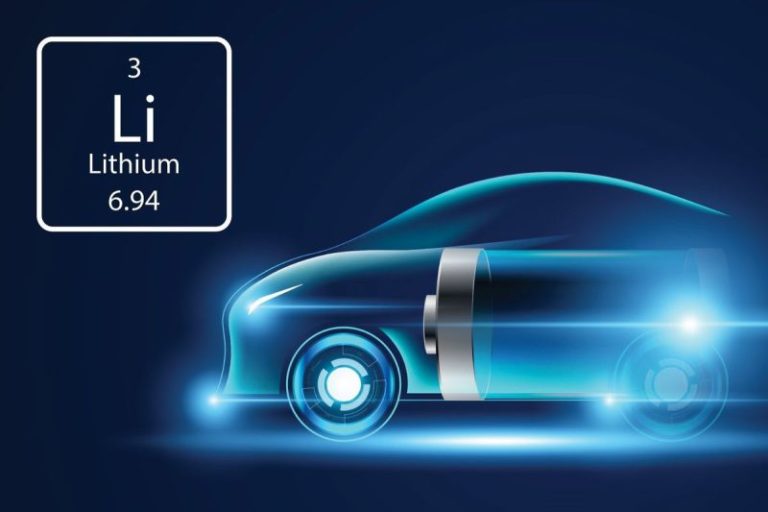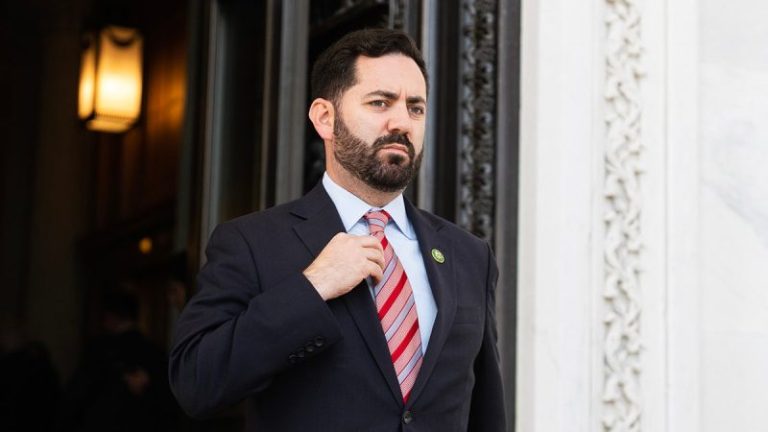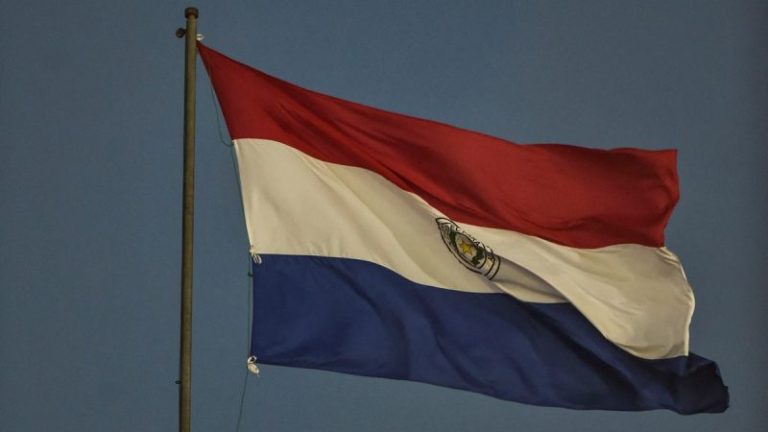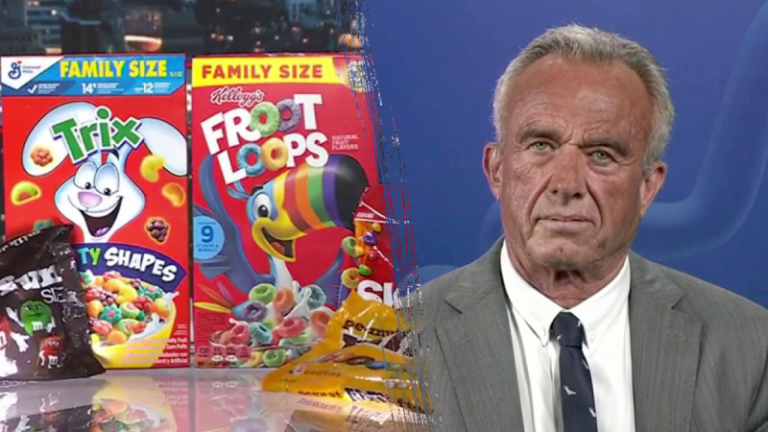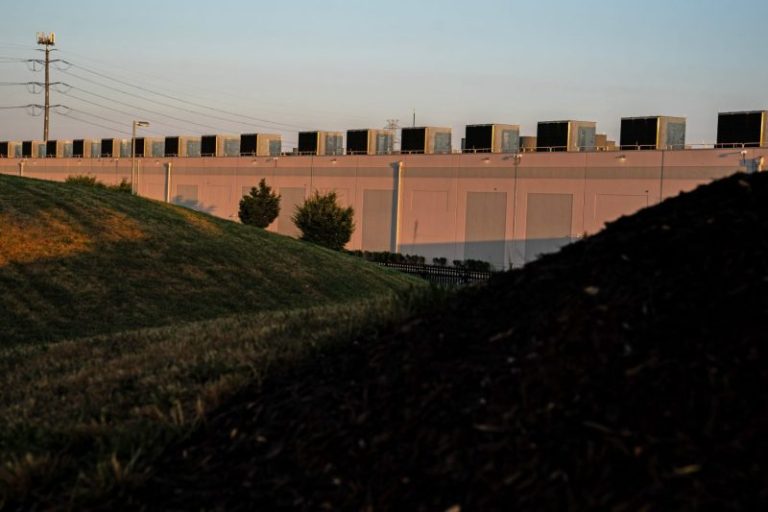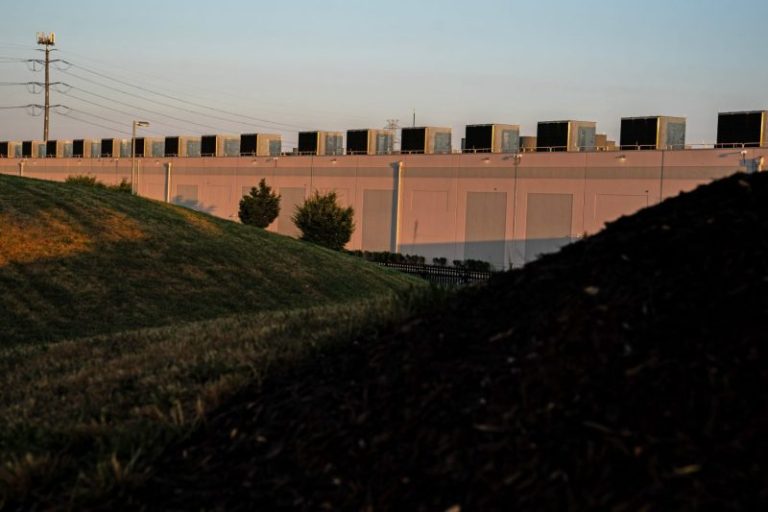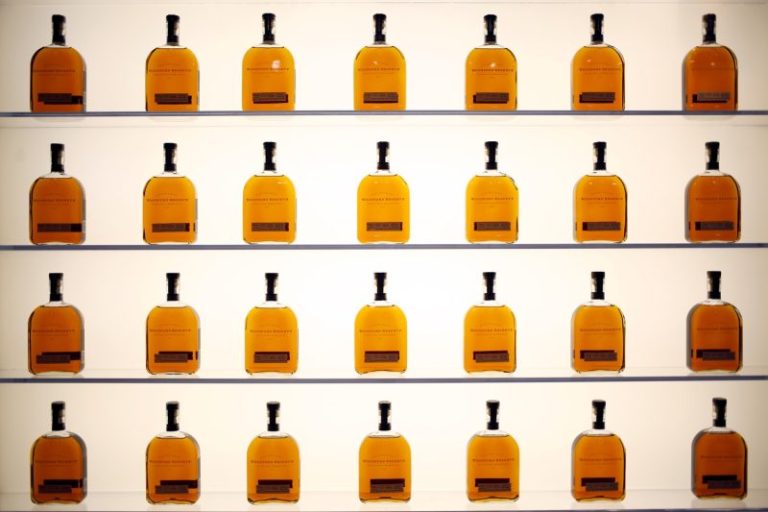Mergers and acquisitions are common in the lithium space, with the biggest news in the industry recently being Rio Tinto’s (ASX:RIO,NYSE:RIO,LSE:RIO) acquisition of Arcadium Lithium for US$6.7 billion in March of this year. The acquisition transforms Rio Tinto into a global leader in lithium production with one of the world’s largest lithium resource bases.
As for Chile, the country’s lithium landscape is changing following the December 2024 announcement that as a part of its National Lithium Strategy toward public-private partnerships, the government opened up the process of assigning special lithium operation contracts to a total of 12 priority areas.
All in all, lithium investors have a lot to keep an eye on as the space continues to shift. Read on for an overview of the current top lithium-producing firms by market cap. Data was current as of April 4, 2025.
Biggest lithium-mining stocks
1. Rio Tinto (ASX:RIO,NYSE:RIO,LSE:RIO)
Market cap: US$99.83 billion
Share price: AU$112.70
Rio Tinto, a global powerhouse in the resource sector for decades, is mostly known for its iron and copper production. However, in recent years, the mining giant has been expanding its position in the world’s lithium market.
In March 2025, the company cemented its position as one of the biggest lithium-producing companies in the world with the US$6.7 billion all-cash acquisition of Arcadium Lithium, the lithium giant formed after the US$10.6 billion merger of lithium majors Allkem and Livent.
Following the acquisition, Rio Tinto is consolidating Arcadium’s portfolio with its own lithium projects under the name Rio Tinto Lithium. Arcadium’s portfolio includes the Salar del Hombre Muerto and Olaroz lithium brine operations in Argentina, as well as the Mount Cattlin hard-rock mine in Western Australia, which is entering care and maintenance in the second half of this year. It also has lithium hydroxide production capacity in the US, Japan and China.
At the time, Rio Tinto said it will increase its lithium carbonate equivalent production capacity to over 200,000 metric tons (MT) annually by 2028.
Lithium acquisitions are not new to Rio Tinto. In 2022, it acquired the Rincon project in Argentina from Rincon Mining. Rincon has an expected annual capacity of 53,000 MT of battery-grade lithium carbonate over a 40 year mine life, although Rio Tinto plans to expand production at the site to 60,000 MT per year. A pilot battery-grade lithium carbonate plant is scheduled for completion in H1 2025.
As of March 2025, Rio Tinto is also reportedly in talks to develop the Roche Dure lithium deposit in the Democratic Republic of Congo, one of the world’s largest hard-rock lithium deposits.
2. SQM (NYSE:SQM)
Market cap: US$10.93 billion
Share price: US$37.05
SQM has five business areas, ranging from lithium to potassium to specialty plant nutrition. Its primary lithium operations are in Chile, where it is a longtime producer, and it is also working to bring production online in Australia.
In Chile, SQM sources brine from the Salar de Atacama; it then processes lithium chloride from the brine into lithium carbonate and hydroxide at its Salar del Carmen lithium plants located near Antofagasta.
Chile’s aforementioned National Lithium Strategy has created some uncertainty for SQM, but the government has stated that it will respect its current contracts, which run through 2030. In May 2024, the state-owned mining company Codelco and SQM formed a joint venture in which Codelco will hold a 50 percent stake plus one share to give it majority control. As of 2031, the state will begin receiving 85 percent of the operating margin of the new production from SQM’s operations.
Outside of South America, SQM owns and operates the Mount Holland lithium mine and concentrator in Australia; the mine hosts one of the world’s largest hard-rock deposits. Mount Holland is a joint venture with Wesfarmers (ASX:WES,OTC Pink:WFAFF), which took over Australian lithium-mining company Kidman Resources in 2019.
Overall, the company sees its total sales volumes from all its lithium operations increasing by 15 percent this year.
SQM has a long-term supply deal with Hyundai (KRX:005380) and Kia (KRX:000270) to provide lithium hydroxide for electric vehicle batteries from its future lithium hydroxide supply. SQM also has supply agreements with Ford Motor Company (NYSE:F) and LG Energy (KRX:373220).
3. Ganfeng Lithium (OTC Pink:GNENF,SZSE:002460,HKEX:1772)
Market cap: US$7.5 billion
Share price: US$2.51
Founded in 2000 and listed in 2010, Ganfeng Lithium has operations across the entire electric vehicle battery supply chain. Even though it is relatively new compared to some companies on the list, Ganfeng has become one of the world’s largest producers of both lithium metals and lithium hydroxide. This is due to its strategy of investing heavily in overseas projects to secure long-term lithium resources, with its first such investment in 2014.
Ganfeng has interests in lithium resources around the world, from Australia to Argentina, China and Ireland; its operations include a 50/50 joint venture with Mineral Resources for the Mount Marion mine in Western Australia. In Argentina, the company has 51 percent stake in Lithium Americas’ (TSX:LAC,NYSE:LAC) Caucharí-Olaroz lithium brine project.
Ganfeng has a controlling interest in Mexico-focused Bacanora Lithium and its Sonora lithium project; it also has a 50 percent stake in a lithium mine in Mali, as well as a 49 percent stake in a salt lake project in China owned by China Minmetals. It owns the private company LitheA, which holds the rights to two lithium salt lakes in Argentina’s Salta province.
Ganfeng purchased Leo Lithium’s (ASX:LLL,OTC Pink:LLLAF) Goulamina project in Mali in May 2024 and brought it into production in December. Goulamina has a mine capacity of 506,000 MT of spodumene per year. The company’s goal is to double that capacity to 1 million MT per year.
In February 2025, Ganfeng brought its US$790 million Mariana project in Argentina into production. The Mariana mine is situated on the Llullaillaco salt flat, and has the capacity to produce 20,000 MT of lithium chloride per year.
Ganfeng has supply deals with companies such as Tesla (NASDAQ:TSLA), BMW (OTC Pink:BMWYY,ETR:BMW), Korean battery maker LG Chem (KRX:051910), Volkswagen (OTC Pink:VLKAF,FWB:VOW) and Hyundai.
4. Albemarle (NYSE:ALB)
Market cap: US$6.92 billion
Share price: US$58.88
North Carolina-based Albemarle is dividing into two primary business units, one of which — the Albemarle Energy Storage unit — is focused wholly on the lithium-ion battery and energy transition markets. It includes the firm’s lithium carbonate, hydroxide and metal production.
Albemarle has a broad portfolio of lithium mines and facilities, with extraction in Chile, Australia, China and the US. Looking first at Chile, Albemarle produces lithium carbonate at its La Negra lithium conversion plants, which process brine from the Salar de Atacama, the country’s largest salt flat. Albemarle is aiming to implement direct lithium extraction technology at the salt flat to reduce water usage.
Albemarle’s Australian assets includes the MARBL joint venture with Mineral Resources (ASX:MIN,OTC Pink:MALRF). The 50/50 JV owns and operates the Wodgina hard-rock lithium mine in Western Australia. Albemarle wholly owns the on-site Kemerton lithium hydroxide facility. The company’s other Australian joint venture is the aforementioned Greenbushes mine, in which it holds a 49 percent interest alongside Tianqi and IGO.
As for the US, Albemarle owns the Silver Peak lithium brine operations in Nevada’s Clayton Valley, which is currently the country’s only source of lithium production. In its home state of North Carolina, Albemarle is planning to bring its past-producing Kings Mountain lithium mine back online, subject to permitting approval and a final investment decision. The mine is expected to produce around 420,000 MT of lithium-bearing spodumene concentrate annually.
Albemarle has received US$150 million in funding from the US government to support the building of a commercial-scale lithium concentrator facility on site. The US Department of Defense has given the company a US$90 million critical materials award to boost its domestic lithium production and support the country’s burgeoning EV battery supply chain.
5. Tianqi Lithium (SZSE:002466,HKEX:9696)
Market cap: US$6.61 billion
Share price: 30.26 Chinese yuan
Tianqi Lithium, a subsidiary of Chengdu Tianqi Industry Group, is the world’s largest hard-rock lithium producer. The company has assets in Australia, Chile and China. It holds a significant stake in SQM.
In Australia, Tianqi, as mentioned, has a significant position in the Greenbushes mine and Kwinana lithium hydroxide plant through the Tianqi Lithium Energy Australia JV with IGO. The hydroxide plant, which is one of the world’s largest fully automated battery-grade lithium hydroxide facilities, processes feedstock from Greenbushes with a capacity of 24,000 MT per year.
Construction work for the Phase 2 expansion at Kwinana, which would have doubled its capacity, was terminated in January 2025 due to the current low-price environment for lithium making it economically unviable.
Tianqi Lithium Energy Australia updated the total mineral resources at Greenbushes in February 2025 to 440 million MT at an average grade of 1.5 percent lithium oxide, and its total ore reserve estimate to 172 million MT grading 1.9 percent lithium oxide.
In March 2025, Tianqi Lithium announced collaborations with a number of academic research institutions including the Institute for Advanced Materials and Technology of the University of Science and Technology Beijing on the research and development of next-generation solid-state battery materials and technology.
6. PLS (ASX:PLS,OTC Pink:PILBF)
Market cap: US$2.92 billion
Share price: AU$2.92
PLS, formerly named Pilbara Minerals, operates its 100 percent owned Pilgangoora lithium-tantalum asset in Western Australia. The operation entered commercial production in 2019 and consists of two processing plants: the Pilgan plant, located on the northern side of the Pilgangoora area, which produces a spodumene concentrate and a tantalite concentrate; and the Ngungaju plant, located to the south, which produces a spodumene concentrate.
PLS has recently completed a few critical expansion projects at Pilgangoora. Its P680 expansion, for a primary rejection facility and a crushing and ore-sorting facility, was completed in August 2024. The P1000 expansion, targeting a spodumene production increase at the site to 1 million MT per year, was completed in January 2025 ahead of schedule and within budget. The company says the ramp-up to full capacity is expected to be completed in the third quarter of 2025.
PLS and its joint venture partner Calix are developing a midstream demonstration plant at Pilgangoora using Calix’s electric kiln technology to reduce the carbon footprint of spodumene processing, decreasing transport volumes and improving value-add processing at the mine. After garnering a AU$15 million grant from the Western Australian Government, construction of the project is expected to be completed in the fourth quarter of 2025.
The company made a move to expand its footprint in Brazil in August 2024 with the acquisition of Latin Resources (ASX:LRS,OTC Pink:LRSRF) and its Salinas lithium project. The project’s resource estimate, which covers the Colina and Fog’s Block deposits, stands at 77.7 million MT at 1.24 percent lithium oxide. The AU$560 million deal was approved by the Western Australia Government in January 2025.
PLS and joint venture partner POSCO (NYSE:PKX) launched South Korea’s first lithium hydroxide processing plant in late 2024, which will be supplied with spodumene from Pilgangoora. PLS also has offtake agreements with companies such as Ganfeng, Chengxin Lithium Group, and Yibin Tianyi Lithium Industry.
7. Mineral Resources (ASX:MIN,OTC Pink:MALRF)
Market cap: US$2.59 billion
Share price: AU$18.95
Australia-based Mineral Resources (MinRes) is a commodities company that mines lithium and iron ore in the country. As mentioned, both of MinRes’ lithium mines are joint ventures with other companies on this list. In addition to the Wodgina mine in Western Australia, which is operated under the MARBL joint venture with Albemarle, MinRes holds a 50 percent stake in Albemarle’s Qinzhou and Meishan plants in China.
MinRes owns 50 percent of the Mount Marion lithium operation, which is a joint venture with Ganfeng Lithium. Production of lithium concentrate began at Mount Marion in 2017, and all mining is managed by MinRes, which also has a 51 percent share of the output from the spodumene concentrator at the site. MinRes completed the expansion of Mount Marion’s spodumene processing plant in 2023. Currently, the plant has an annual production capacity of 600,000 MT spodumene concentrate equivalent.
However, in late August 2024, in light of lithium’s low demand environment, MinRes decided to reduce its operations at Mount Marion to between 150,000 and 170,000 MT of spodumene production in its financial year 2025 compared to the 218,000 metric tons of output achieved in its financial year 2024.
MinRes acquired the Bald Hill lithium mine, which is also located in Western Australia, in 2023. The company released an updated mineral resource estimate in November 2024 of 58.1 MT at 0.94 percent lithium oxide, up 168 percent from the prior June 2018 estimate. In the same news release, MinRes announced that it would have to place the mine on care and maintenance until global lithium prices improve. The final shipment of Bald Hill spodumene concentrate was made in December 2024.
Other lithium companies
Aside from the world’s top lithium producers, a number of other large lithium companies are producing this key electric vehicle raw material. These include Sigma Lithium (TSXV:SGML,NASDAQ:SGML), Liontown Resources (ASX:LTR,OTC Pink:LINRF), Jiangxi Special Electric Motor (SZSE:002176), Yongxing Special Materials Technology (SZSE:002756), Sinomine Resource (SZSE:002738) and Youngy (SZSE:002192).
FAQs for investing in lithium
Is lithium a metal?
Lithium is a soft, silver-white metal used in pharmaceuticals, ceramics, grease, lubricants and heat-resistant glass. It’s also used in lithium-ion batteries, which power everything from cell phones to laptops to electric vehicles.
How much lithium is there on Earth?
Lithium is the 33rd most abundant element in nature. According to the US Geological Survey, due to continuing exploration, identified lithium resources have increased to about 115 million metric tons worldwide. Global lithium reserves stand at 30 million MT, with production reaching 240,000 MT in 2024.
How is lithium produced?
Lithium is found in hard-rock deposits, evaporated brines and clay deposits. The largest hard-rock mine is Greenbushes in Australia, and most lithium brine output comes from salars in Chile and Argentina.
There are various types of lithium products, and many different applications for the mineral. After lithium is extracted from a deposit, it is often processed into lithium carbonate, lithium hydroxide or lithium metal. Battery-grade lithium carbonate and lithium hydroxide can be used to make cathode material for lithium-ion batteries.
What country produces the most lithium?
The latest data from the US Geological Survey shows that the world’s top lithium-producing countries are Australia, Chile and China, with production reaching 88,000 metric tons, 49,000 metric tons and 41,000 metric tons, respectively.
Global lithium production reached 240,000 metric tons of lithium in 2024, up from 204,000 MT in 2023, according to the US Geological Survey. About 87 percent of the lithium produced currently goes toward battery production, but other industries also consume the metal. For example, 5 percent is used in ceramics and glass, while 2 percent goes to lubricating greases.
Who is the largest miner of lithium?
The world’s largest lithium-producing mine is Talison Lithium and Albemarle’s Greenbushes hard-rock mine in Australia, which put out 1.38 million MT of spodumene concentrate in the fiscal year 2024. The top-producing lithium brine operation was SQM’s Salar de Atacama operations in Chile, with 2023 production of 166,000 metric tons of lithium carbonate.
Who are the top lithium consumers?
The top lithium-importing country is China by a long shot, and second place South Korea is another significant importer. China is also the top country for lithium processing, and both are home to many companies producing lithium-ion batteries.
Why is lithium so hard to mine?
The different types of lithium deposits come with their own challenges.
For example, mining pegmatite lithium from hard-rock ore is known for being expensive, while extracting lithium from brines requires vast amounts of water and processing times that can sometimes be as long as 12 months. Lithium mining also comes with the difficulties associated with mining other minerals, such as long exploration and permitting periods.
What are the negative effects of lithium?
Both major forms of lithium mining can have negative effects on the environment. When it comes to hard-rock lithium mining, there have been incidents of chemicals leaking into the water supply and damaging the local ecosystems; in addition, these operations tend to have a large environmental footprint.
As mentioned, lithium brine extraction requires a lot of water for the evaporation process, but it’s hard to understand the scope without numbers. It’s estimated that approximately 2.2 million liters of water are required to produce 1 metric ton of lithium, and that can sometimes mean diverting water from communities that are experiencing drought conditions. This form of lithium extraction also affects the condition of the soil and air.
Will lithium run out?
Although future demand for lithium is expected to keep rising due to its role in green energy, the metal shouldn’t run out any time soon, as companies are continuing to discover new lithium reserves and are developing more advanced extraction technologies. Additionally, there are companies working on technology to recycle battery metals, which will eventually allow lithium from lithium-ion batteries to re-enter the supply chain.
What technology will replace lithium?
Researchers have been working on developing and testing a variety of lithium alternatives for batteries. Some of these options include hydrogen batteries, liquid batteries that could be pumped into vehicles, batteries that replace lithium with sodium or magnesium and even batteries powered by sea water. While nothing looks ready to replace lithium-ion batteries right now, there is potential for more efficient or more environmentally friendly options to grow in popularity in the future.
How to buy a lithium stock?
Investors are starting to pay attention to the green energy transition and the raw materials that will enable it.
When it comes to choosing a stock to invest in, understanding lithium supply and demand dynamics is key, as there are unique factors to watch for in lithium stocks. The main demand driver for lithium is what happens in the electric vehicle industry, which is expected to keep growing, and also the energy storage space. Analysts remain optimistic about the future of lithium, with many predicting the market will be tight for some time.
Investors interested in lithium stocks could consider companies listed on US, Canadian and Australian stock exchanges. They can also check out our guide on what to look for in lithium stocks today.
Securities Disclosure: I, Melissa Pistilli, hold no direct investment interest in any company mentioned in this article.
Securities Disclosure: I, Georgia Williams, hold no direct investment interest in any company mentioned in this article.


